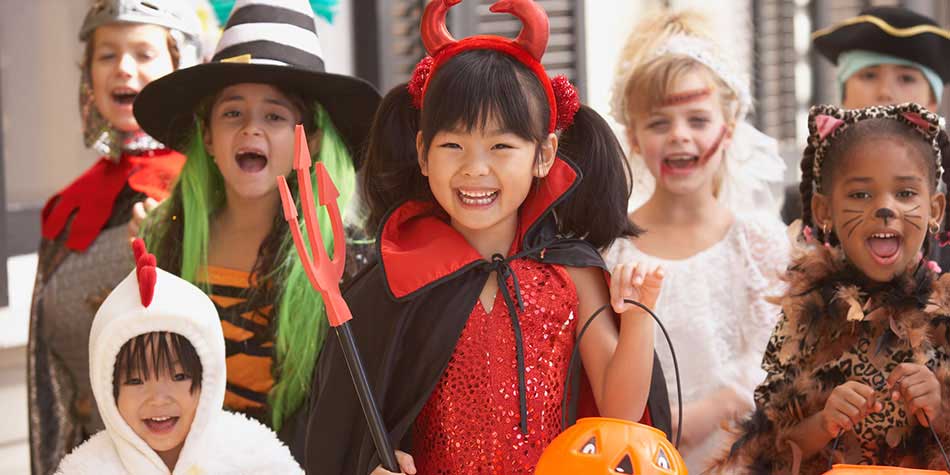
Soon, your little ghost or goblin will be gearing up for another night of trick-or-treating. Impress your family this year with these fun Halloween facts while you prepare for a safe evening with our costume safety tips.
Halloween history in the U.S.
While the origins of Halloween can be traced all the way back to the days of the Celts in Europe, the holiday in the U.S. didn’t emerge until the 1800s after the arrival of Irish immigrants during the potato famine.
Some of the traditions we enjoy today, such as pumpkin carving, came directly from the Irish. Others, including disguising yourself to ward off spirits, were adapted from the Celts and other old European traditions.
Once Halloween was celebrated in the U.S., it didn’t take long for it to become the holiday we recognize today. The event quickly became less of a religious activity and more of a family activity. By the 1940s, haunted houses and trick-or-treating were part of the fun.
At first, costumes were made by hand, but by the early 1900s, they were being produced in factories. Companies began to make latex Halloween masks in the 1950s. Ghosts, witches and skeletons were popular from the beginning. Like today, new costume ideas came from book and movie characters, Hollywood celebrities, and other media sources.
Halloween costume safety tips
Trick-or-treating is supposed to be all fun and games, but it can come with unexpected risks.
While parents in the early days likely considered safety, there are now clear do’s and don’ts for costume safety. You can help keep your child stay safe on Halloween night by following these tips:
- Check the length of the costume in advance, and hem it if needed to prevent trips and falls.
- If your child’s costume includes a mask, let him or her wear it for photos, then leave it at home—it can be hard to see with one.
- Add reflective tape to your child’s costume and trick or treat bag so he or she can be seen.
- Purchase flame-resistant costumes, fabrics and accessories only.
- Apply Halloween makeup on a small area in advance to test for an allergic reaction. Don’t use the makeup if the area becomes red, swollen or itchy.
- Say “no” to decorative contact lenses unless approved by an eye care provider.
Sources
$webqFacilityNumber
Need a Physician?